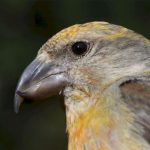Recent Posts
 Demotivational Posters for Birds (X)By Kai Pflug
Demotivational Posters for Birds (X)By Kai Pflug 7 Ways to Make Birders CryBy Kai Pflug
7 Ways to Make Birders CryBy Kai Pflug Hawk ConundrumBy Faraaz Abdool
Hawk ConundrumBy Faraaz Abdool China – Profile for BirdersBy Kai Pflug
China – Profile for BirdersBy Kai Pflug Ask a Bird Guide: What’s the most surprising or memorable reaction you’ve seen from a guest while birding?By Editor
Ask a Bird Guide: What’s the most surprising or memorable reaction you’ve seen from a guest while birding?By Editor Snowy Owl Chase in OregonBy Hannah Buschert
Snowy Owl Chase in OregonBy Hannah Buschert Book Review: Crossbills and Conifers: One Million Years of Adaptation and Coevolution By Craig W. BenkmanBy John Hague
Book Review: Crossbills and Conifers: One Million Years of Adaptation and Coevolution By Craig W. BenkmanBy John Hague
Posting Calendar
| DAY | WRITER(S) | SERIES (weekly) |
|---|---|---|
| MON | Kai (w) | Birding Lodges |
| TUE | Donna (m) Susan (m) Hannah (m) Fitzroy (m) Grace (m) | Bird Guides |
| WED | Leslie (bw) Faraaz (bw) | Ask a Birder |
| THU | Paul (w) Cathy (bw) | Birder’s Lists |
| FRI | David (w) | Species Spotlight |
| SAT | Peter (bw) Luca (bw) | From the Archives |
| SUN | Clive (w) Sanjana (m) | Three Photos |
| w weekly, bw biweekly, m monthly | ||
| Any time: Jason, Mark, John, Sara, Rolf, Dragan | ||
See here for info on the writers.
Newsletter
Signup and receive notice of new posts!
Thank you!
You have successfully joined our subscriber list.






As much as I’d like to take credit for this, I can’t. 🙂
wish the killers would move to Saugerties
I loathe Starlings, but it probably would’ve been good to have given those people some sort of heads up… no pun intended.
I loathe starlings too but what are the chances of them poisoning other birds besides them. I am also wondering what would happen if a bird of prey got hold of them. Would they be poisoned as well?
A heads up would have been a good idea. I know I would have freaked out too if I opened my door to a ton of dead birds, even if they were starlings.
I do detest them though. They make a mess of my heated bird bath!
I, for one, and completely and unequivocally opposed to dead birds falling from the sky. Regardless of species (though I am really not a huge fan of starlings).
Those starling carcasses should be hand-delivered to the offices of the people responsible for this insanity. The offices that they should no longer have because they should be fired.
Thanks, Corey!!
As much as all of us would LOVE to see Starlings be removed permanently from North America, the following might be worth keeping in mind:
Starlings did not willingly invade North America, they were released here by humans. So this whole mess isn’t their fault at all and we can barely blame them for doing what any bird in their situation would do (live, reproduce) – it is yet again our fault. We should be loathing those who released them and treat Starlings with a little respect and have some pitty, even during culling operations. After all, they are still birds and certainly neither evil nor despicable. They are actually quite lovely.
If culling operations are shown to have a favourable impact on native species communities, then I say go for it. But a single and isolated measure that kills a few thousand Starlings in one small area isn’t going to change anything at all, it is just a waste of effort, manpower, money and life (the latter referring to the starlings who paid the highest price for this nonsense). Next spring, those areas devoid of Starlings through this one culling operation will be filled in no time by the population surplus of the surrounding areas. No gain!
A large-scale, coordinated (state- or even nationwide) culling operation would probably make sense if conducted over many years. A bird species can definitely and permanently be removed from a continent. It’s been done before, even with species whose population was presumably much larger than the current North American population of Starlings (remember Martha?).
Something like this would likely find my full and unequivocal support. But spontaneous b*llsh*t actions like the New Jersey incident are just maddening, as is the description of Starlings in some of the press articles. So, they are also posing a threat to aircrafts? Yeah, right, and they support the Taliban in Afghanistan, carry birdflu and poop on national monuments.
Give me a freaking break!
Might it be worth pointing out that the factory dairies and feedlots that provide ample feed for starlings have arguably done more to increase the populations of starlings than could ever be reversed by poisoning – which is done at tax payer expense and therefore creates no incentive for livestock operators to build feeding stations that exclude birds, or better yet – to not have a factory farms and feedlots to begin with.
Officials often assert that starlings are “known carriers of disease that can be transferred to both humans and domestic animals.” This statement, however, is true of just about any animal, including domestic dogs and cats, and cattle. Indeed, even humans are “known carriers of serious, infectious diseases.”
Its unclear how tiny bird dropings meets or exceeds the risks posed by exposure to the abundant livestock manure that accumulates in feeding areas, or that the risk posed by the presence of the birds is greater than the risks posed by the spreading of the toxic poisons that would kill them.
What is clear is that poision used, DRC-1339 (also called starlicide) is inhumane. It takes up to three days following ingestion to cause mortality, by way of irreversible kidney and heart damage.
Lethal control methods are more than just cruel; they are also ineffective in the long term.
Poisoning must be repeated routinely to offset the high reproductive rates of starlings especially when the root cause of the problem (access to free feed)is not addressed.
Some people may feel that because starlings are non-native species that compete with native bird species that their suffering should be of no concern.
It is worth pointing out that native bird populations are impacted by a variety of factors, most of which arise from human-caused habitat destruction and pollution.
Having been intentionally introduced by European settlers in 1890, starlings make a convenient scapegoat for native bird declines especially by those seeking to rationalize inhumane treatment of these birds. Decades of poisoning efforts, however, have proven to be futile in reducing starling populations and, as such, poisoning does not significantly benefit native bird populations.
In dealing with non-native animals, it is important to remember that such species are out of place usually because of irresponsible human actions; therefore, we should strive to make sure our policies toward such animals are not equally irresponsible.
Rant over.
Monica, Corey, Jochen – I couldn’t agree more…we need to remember who’s fault it was that Starlings reached North America in the first place, found an abundance of altered habitat that suited them perfectly, and provided them with all the food they could ever want before we start poisoning them so inhumanely. Yes, they do deprive native cavity-nesters of nesting sites – but more so than legions of developers and planning authorities who slice down huge areas of forest so that yet more people can buy a nice house “in the country” and escape the city? More so than the millions of acres of woodland cleared for meat production? Etc etc.
Starlings were put into an environment that they shouldn’t have been suited to (forest), and we went and adapted that environment into something that suited them perfectly (suburbia).
What’s the answer? I don’t like the way Starlings compete any more than any ardent ‘kill ’em now’ New Jersey official, but unless a humane biological control agent that targets Starlings only is ever found or produced, there is no answer for precisely the reasons outlined in the comments above.
We opened the box and let the Starlings out – there’s just no way to close the lid again. And the fault and the repercussions lie entirely on our shoulders…
The problem we created with Starlings should be a lesson taught to all high-school biology classes alongside warnings of what happens when one species decides it’s the only one on the Planet that actually matters and deserves any respect.
Any dead starling is a good Starling….All they do is destroy song bird nests with their long beaks..go to youtube and watch a vid. of a martin nest of young being poke to death
@vernon: Thanks for that illuminating comment. You’ve really added to the level of discourse here at 10,000 Birds and we really appreciate your efforts. May a cloud of dead starlings fall from the sky into your yard as a reward.
I live in an area where farming is a way of life and my dad makes his living from farming now that being said the starlings cost us so much money from damaged crops and their droppings making the livestock sick that it’s hard to make a living. We get flocks of starlings from 10k to 50k and they wipe out everything and that includes almost every other cavity nesting bird in the area. Some people find it cruel but these birds are a plague that never should have been in the US in the first place. The native birds have no defence against this invader that is the european starling and I wish the government would do more to control these aweful birds.
I don’t believe that blaming some folks who releasethe starling almost 100 years ago is going to make much of a difference today. The fact is they are a non native species, cause huge problems with the native wild life birds/animals. Then there is the problems that are caused with crops & domestic animals. They should be removed, by what ever means needed. Should a cloud of dead starling fall in my yard I would only smile & feed the dead to the alligators!
Effective in Early Spring while weather is still freezing cold at night. If you can locate their roosting trees go out just before dark and spray soapy water mist into the trees. Use a fruit tree sprayer. The soap in the water allows the water to absorb into the starlings undercoat. Next morning dispose of the bodies from under the tree. Since people are to blame for introducing starlings into our wildlife system, people need to take responsibility to correct this error.